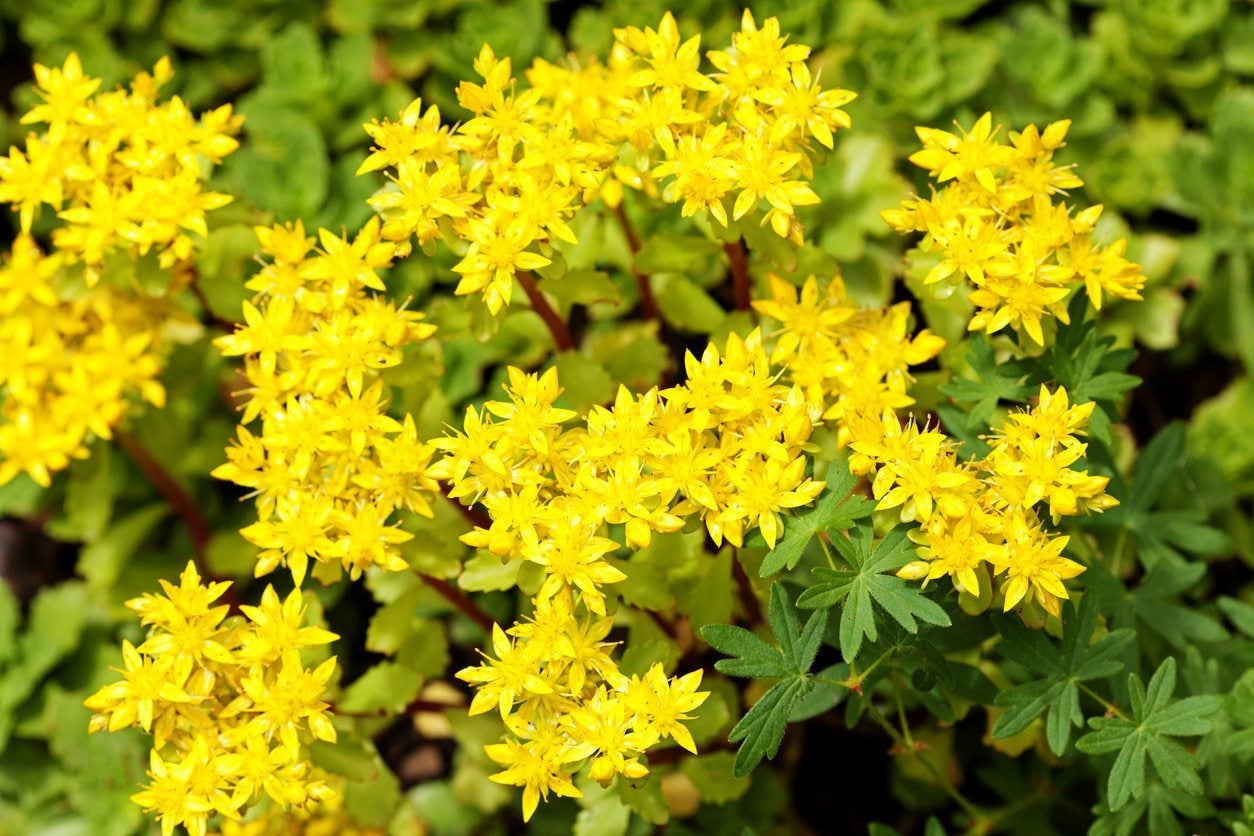Goldmoss Plant Info: Caring For Sedum Acre Plants


You may know Sedum acre as mossy stonecrop, goldmoss, or not at all, but this darling succulent should be something you include in your landscape scheme. The versatile plant fits perfectly into a rock garden and thrives in poor soils, such as sandy or gritty compositions. Continue reading for fun goldmoss info and cultivation tips.
What is Sedum acre?
Sedum acre's common name, goldmoss, is about as explanative as you can get. It is a low-growing groundcover that tumbles gleefully over rocks and other objects in the garden. The European native has become popular in North America primarily for its adaptability and ease of care. Gardeners know that caring for Sedum acre is a breeze and the sweet little plant has the ability to accent many other types of flora. Do you have an alpine garden or rocky site in your yard? Try growing Sedum acre. It is useful in full sun to partial shade locations where the low profile of just up to 2 inches (5 cm.) in height allows it to caress hills, rocks, pavers, and containers with the tightly packed leaves. The thick, succulent foliage overlaps alternately. Sedum acre spreads with a moderate rate via rhizomes to a width of up to 24 inches (61 cm.). In late spring to early summer, the stems elongate and flowers form. The blooms are star shaped, have five petals in vibrant yellow, and last throughout the summer. There are no special instructions when caring for Sedum acre. As with other sedum plants, just watch it take off and enjoy.
How to Grow Goldmoss
Sedum acre prefers slightly acidic sites with excellent drainage and gritty soil. Even shallow soil, limestone, rocks, gravel, sand, dry, and hot locations pose no problem for this little plant. Growing Sedum acre as a groundcover is less tolerant of foot traffic than other species but can survive the occasional step. Goldmoss is useful in gardens in USDA zones 3 to 8. It tends to be self-seeding and will expand season by season into a dense mat of succulent foliage. If you wish to start new plants, simply break off a stem and stick it into soil. The stem will quickly root. Water new plants for the first few months as they establish. Mature plants can tolerate drought conditions for brief periods.
Additional Goldmoss Plant Info
Sedum acre can withstand severe site conditions but is also relatively immune to rabbit and deer nibbling. The name comes from the plant's acrid taste, but this sedum is actually edible in small amounts. Young stems and leaves are eaten raw while older plant material should be cooked. Addition of the plant adds a spicy, peppery flavor to recipes. Be warned, however, in some cases gastrointestinal distress can occur. A better use for the plant is in its powdered form as a treatment for everything from cancer to water retention. In the garden, use it as a sunny border, rockery plant, in containers, and along paths. Sedum acre even makes a fun little houseplant, especially when combined with other succulents.
Gardening tips, videos, info and more delivered right to your inbox!
Sign up for the Gardening Know How newsletter today and receive a free copy of our e-book "How to Grow Delicious Tomatoes".

Bonnie Grant is a professional landscaper with a Certification in Urban Gardening. She has been gardening and writing for 15 years. A former professional chef, she has a passion for edible landscaping.
-
 Looking For Plants To Give You The Soft And Fuzzies? Try These 5 Fuzzy Leaf Plant Options
Looking For Plants To Give You The Soft And Fuzzies? Try These 5 Fuzzy Leaf Plant OptionsLovers of texture, drama, silver foliage and tactile plants will adore these special sensory garden additions. These fuzzy leaf plant options will leave you all aglow
By Susan Albert
-
 Get Ready For A Summer Of Hummers! Grow These Full Sun Hummingbird Plants and Flowers
Get Ready For A Summer Of Hummers! Grow These Full Sun Hummingbird Plants and FlowersIf you’re lucky enough to enjoy a sunny backyard, make sure you are maxing out on your pollinator opportunities and grow these full sun hummingbird plants and flowers
By Tonya Barnett